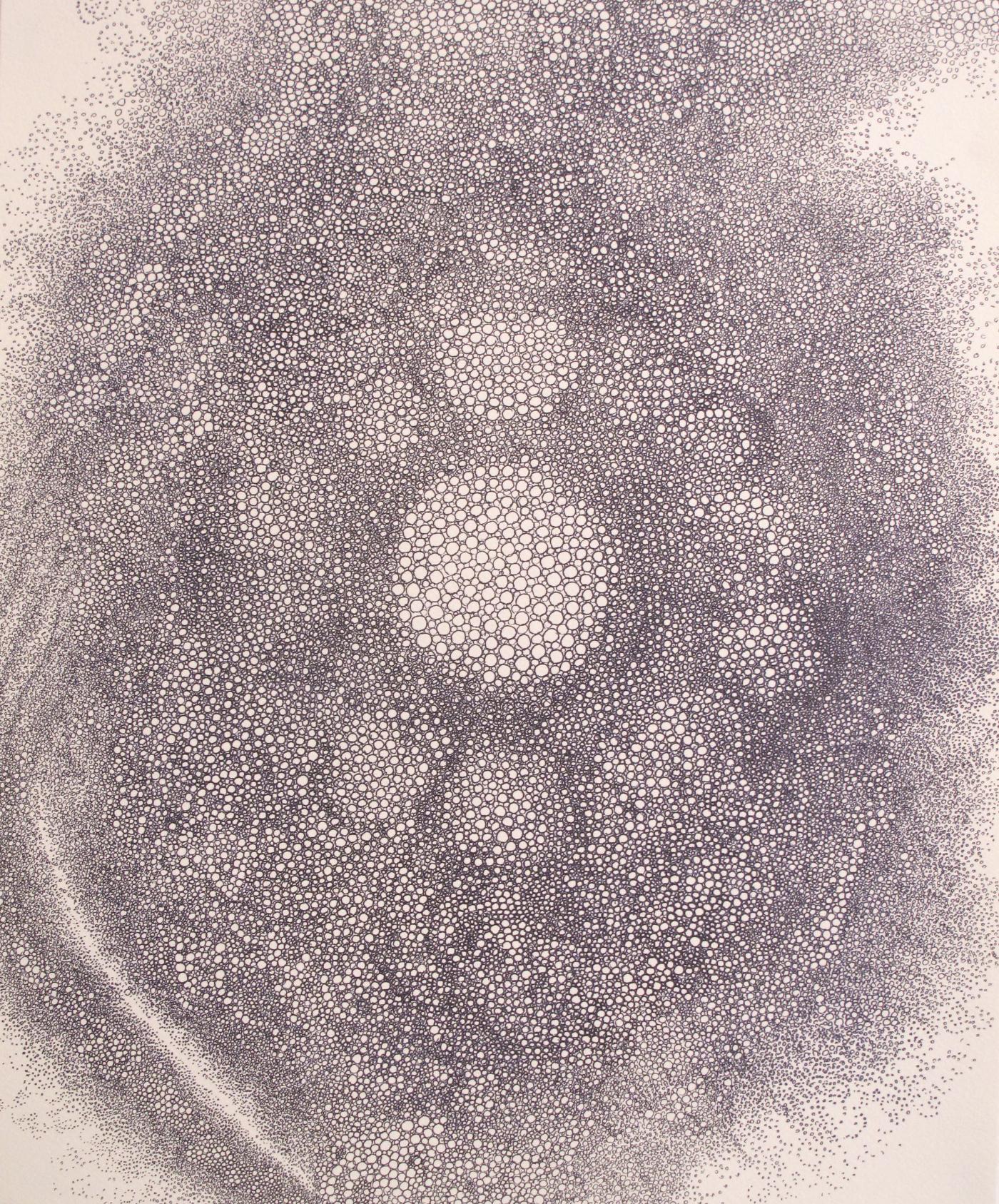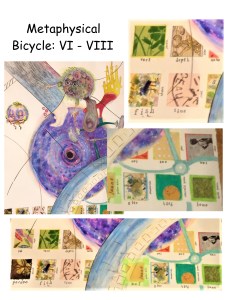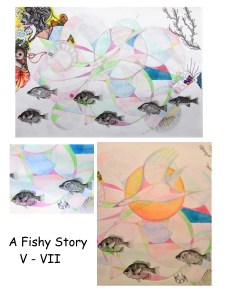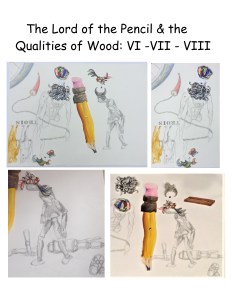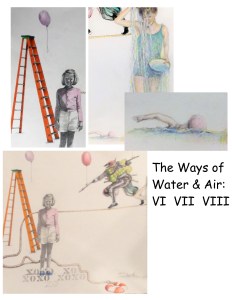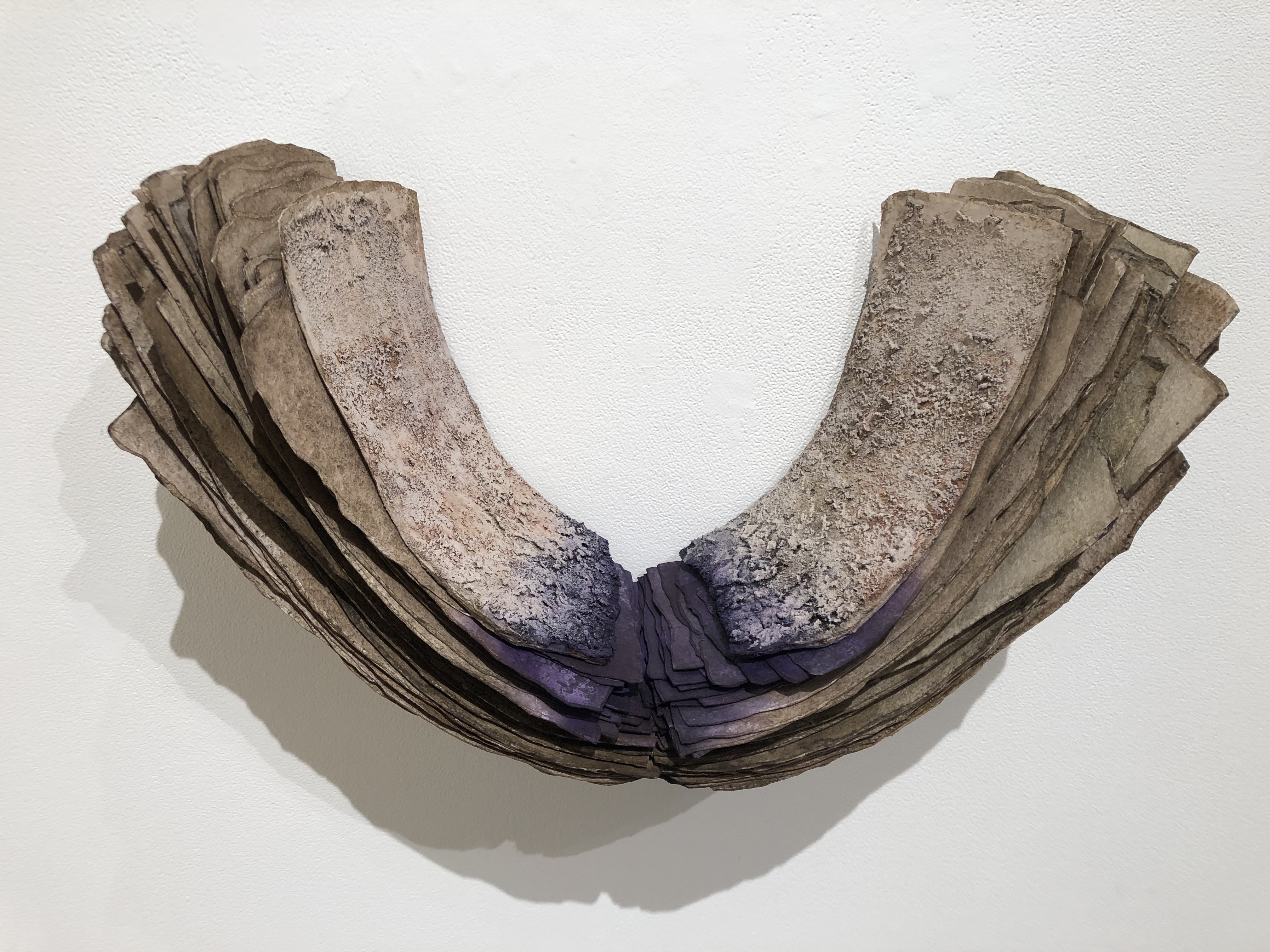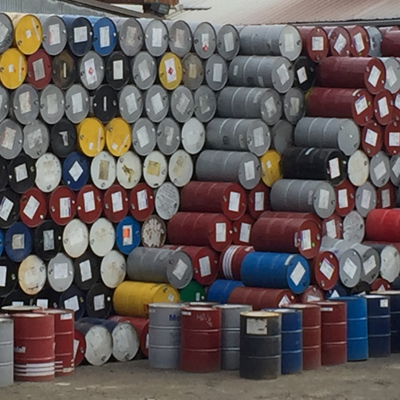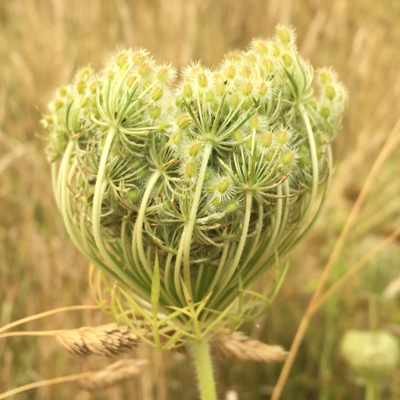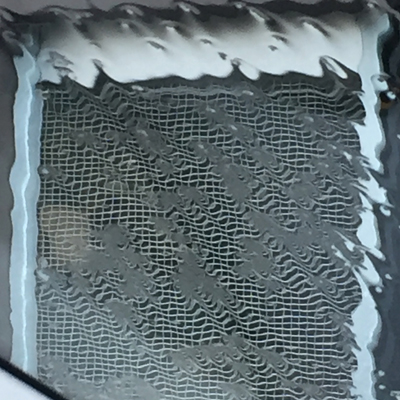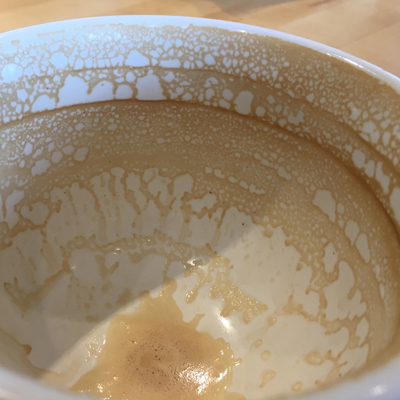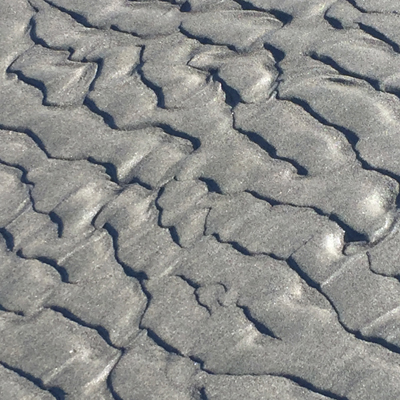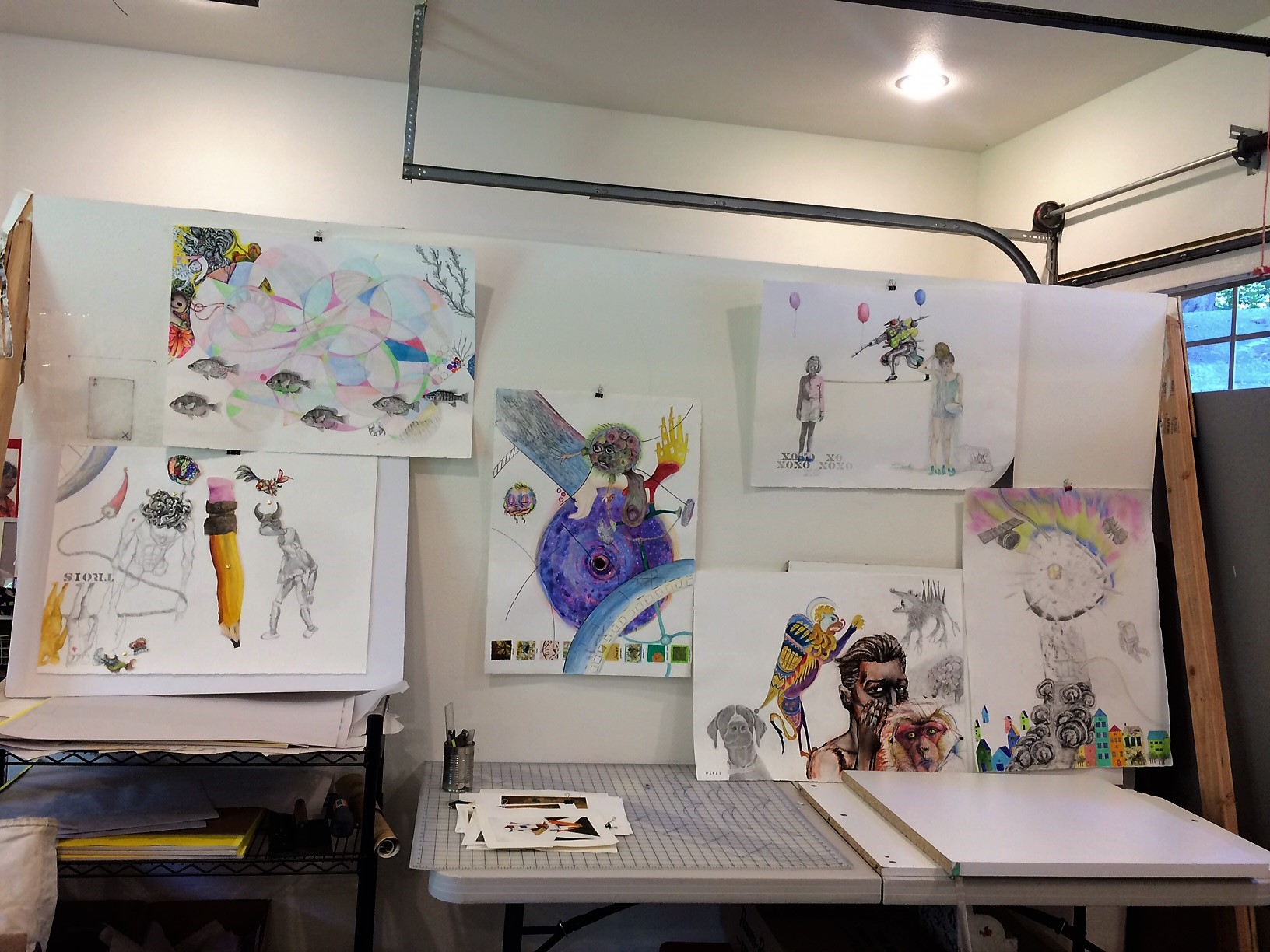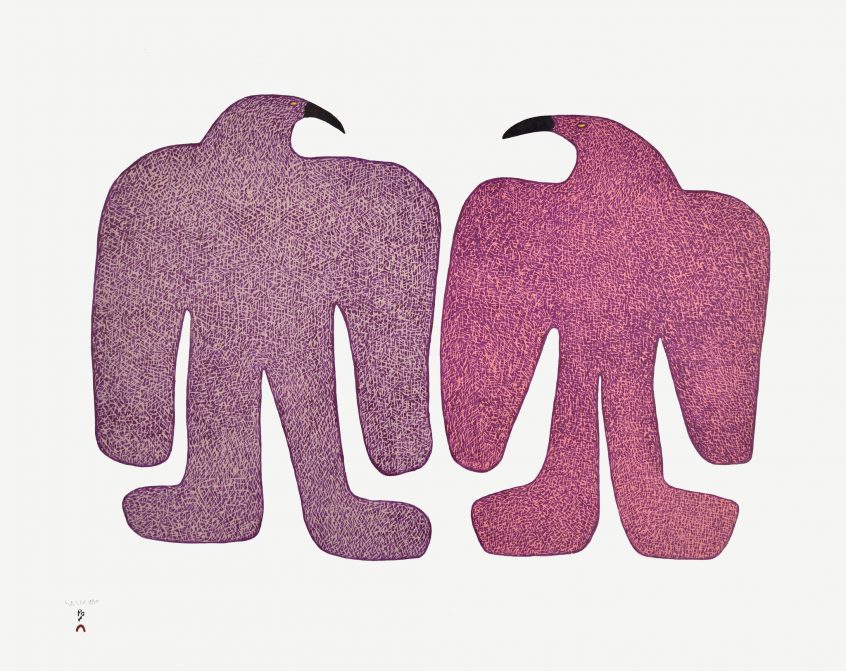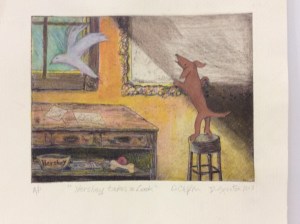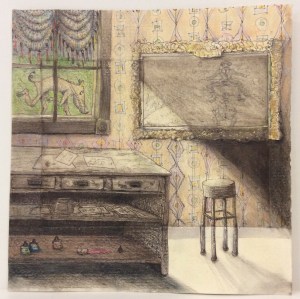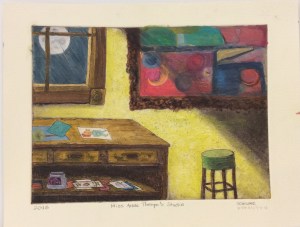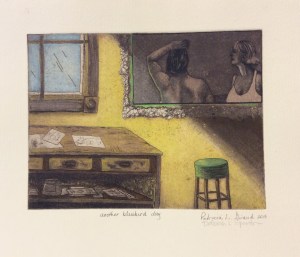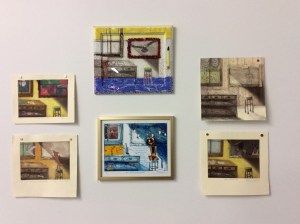Have you ever had a museum all to yourself? It’s one of those freak occurrences that rarely happens, like going to a movie theater by yourself, and then the movie starts and you realize that no one else ever came in. Honestly, unless you’ve worked in a museum, it probably rarely happens.
In the spirit of dipping my toes back into the outer world, into things I once enjoyed before the mere presence of people (no matter how benign) was enough to be processed as a threat to my existence, I took a trip down to Salem, OR to visit the Hallie Ford Museum, the excuse being to check out the first phase of a two-part exhibition of prints from the Crow’s Shadow Retreat in eastern Oregon. I’d visited the Hallie Ford at least a couple of times before, and even the most crowded I’d ever seen it wouldn’t have qualified as even a slow day at the PAM or MoPOP (which is also no measure of the value and quality of the Hallie Ford), but there’s a considerable difference between a few other patrons and zero other patrons.

I walked up to the front desk, and told the woman that I had purchased a ticket for 2 PM.
She replied, “You must be Clayton!”
As she said that, I noticed another man who was wrapping up his visit, and that was the last non-employee I saw in the building during my time there. This was part of the appeal of the trip – during the last year, my only art viewing consisted of visiting a gallery in Portland that a couple of friends had a show up in last fall. Right before things really changed, I’d visited another gallery to see some enormous woodcut prints, and I remember doing that elbow bump thing we did for about three weeks with the artist before chatting with him for a while. So the steps the Hallie Ford is currently taking (I’m sure they’re on their website), combined with it not being jammed up with people made it an ideal location for me to put some art in my eyeballs.
I went knowing that the reason I was there – the prints in their Print Room – wasn’t really likely to be my cup of tea. That’s saying nothing about the quality of the work, simply that I rarely connect in a meaningful way with work that’s nature-oriented, regardless of medium. So I wasn’t putting a ton of weight on that part of the museum, this was a trip out to see something, hopefully spark some ideas. I generally liked the prints, I suspect some of them would have resonated a bit more if I’d watched an artist talk, gotten a better feeling for where each of the artists were coming from. And there was the matter of while these were prints, honest-to-God fine art prints, my chief experience as a printmaker has been in making etchings, some woodcuts, but never screen-printing or lithography. So I also didn’t have a toehold in technique to really immerse myself in the prints.
The first part of the museum I checked was on the main floor, I can’t recall the exact name for it, but it was a selection of work from Pacific Northwest artists, in a variety of media. It was in the middle of this exhibit that I saw the first piece that really grabbed my atttention. This is “Blondie,” an oil painting by Arvie Smith.
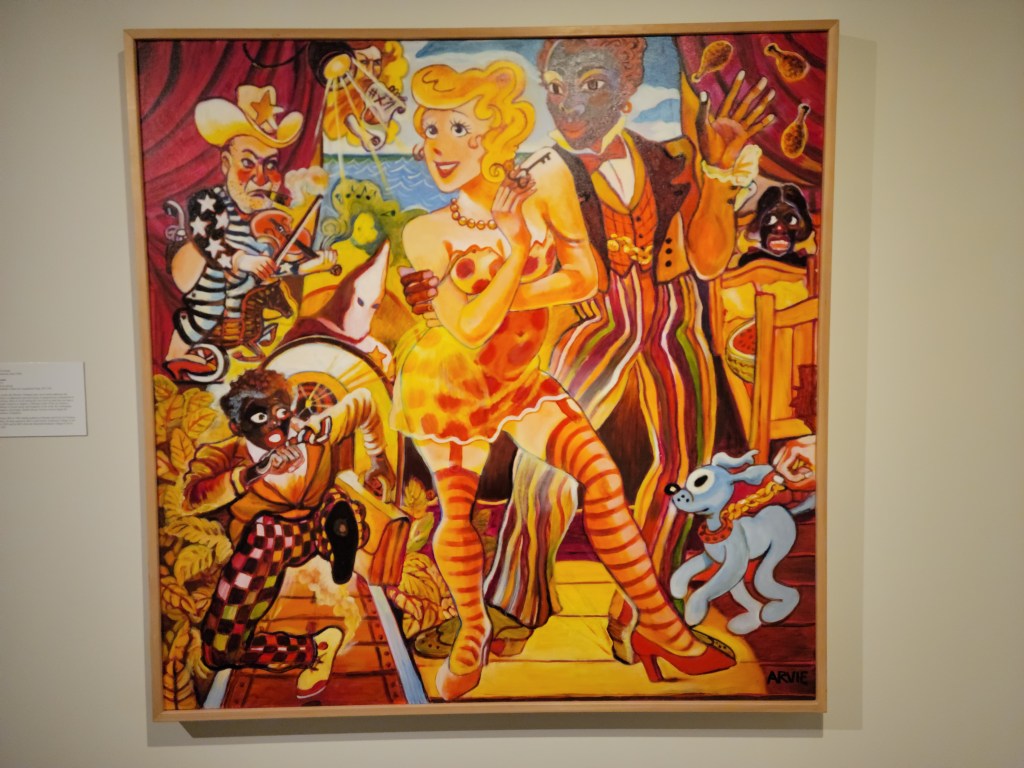
This is a lively, colorful painting that jumped off the wall in the midst of more mannered work. My real mental work started on this piece later, when I was preparing to post a pic of it on my Instagram stories (as I tend to do). The realization hit me, posting this piece in full is exactly the sort of thing that can get you suspended or banned from a platform. This is an aggressive, challenging piece of artwork that uses stereotypical imagery to make a point about that imagery itself. If a person who’s been targeted with this kind of imagery doesn’t have the right to address it, who does?
But on social media, online, none of that matters. Everything is binary, good or evil, racist or woke, ones or zeroes. There is no room for context, no time for deeper thought, and sure as hell no place for self-examination or admitting you were wrong about anything ever. You know, all the stuff that gives people a chance to be better at anything ever. The first reaction is all that matters, and that fellow in the bottom left, if posted on social media, would have been lightning rod for anyone who didn’t agree with me for any reason to run me off of that platform. I ended up posting a cropped version of the main figure on my stories, both neutering the artwork and making me question why on Earth I was participating in a platform that couldn’t deal with art that had anything meaningful to say.
In wandering through the building, there were some unexpected delights. There was an early Van Gogh painting (in Salem, OR!!!), a Diego Rivera painting, a Rodin sketch. The show of middle eastern coins was fascinating (the oldest being something like 1400 years old!). And then kitty corner from the Rivera painting was the other piece that really struck me. It’s called “Illegal Alien’s Guide to Somewhere Over the Rainbow,” a (very large) lithograph by Enrique Chagoya.
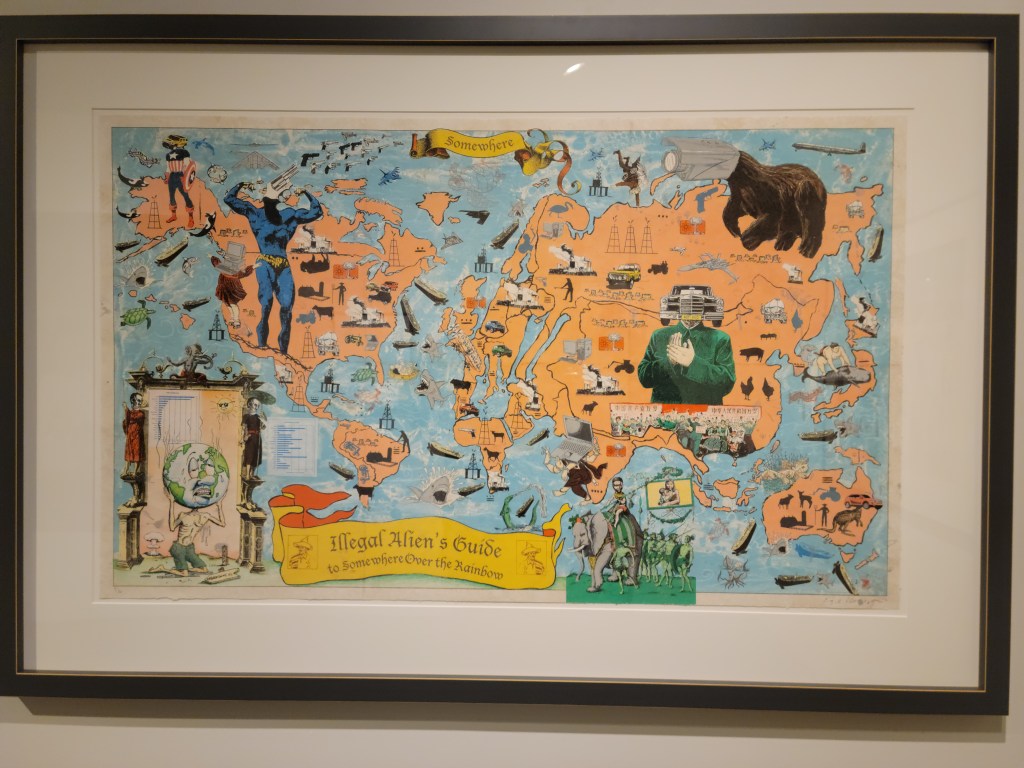
Similar to Arvie Smith’s piece, it’s colorful, energetic. There’s elements of found art incorporated throughout the piece, like little hidden jokes you stumble across, one after another. It speaks to optimism snarkily, a somewhat fatalistic look at the distance yet to be traveled, both literally for those seeking to find a new home, and metaphorically, in the distance between those people and acceptance from the people wherever they’re headed to. It plays with familiar imagery, and warps it for effect. It felt like an acknowledgment of the duality that people are having to flee to find a better life, but that maybe no best life exists. We all have work to do, distance left yet to travel.
I crossed paths with the lone security guard a couple of times, and talked to him for a couple of minutes before heading down to the lobby, where I talked with the woman at the front desk for a few minutes. All in all, I was there about an hour. I doubled back to look at those two aforementioned pieces a couple of times during that time, as well as getting another look at the Van Gogh. I’d paid for two hours of parking, but the last year has done a lot to erode my attention span, particularly away from home. Even with literally no one else around me for the vast bulk of my time, I reached the limit of my focus more quickly than I would have liked.
The second phase of the Crow’s Shadow Retreat prints opened this week (I believe), I hope to get back down there again in the next month or so to see the others, but also to spend some more time with some of those pieces that lodged themselves in my head on this trip.


